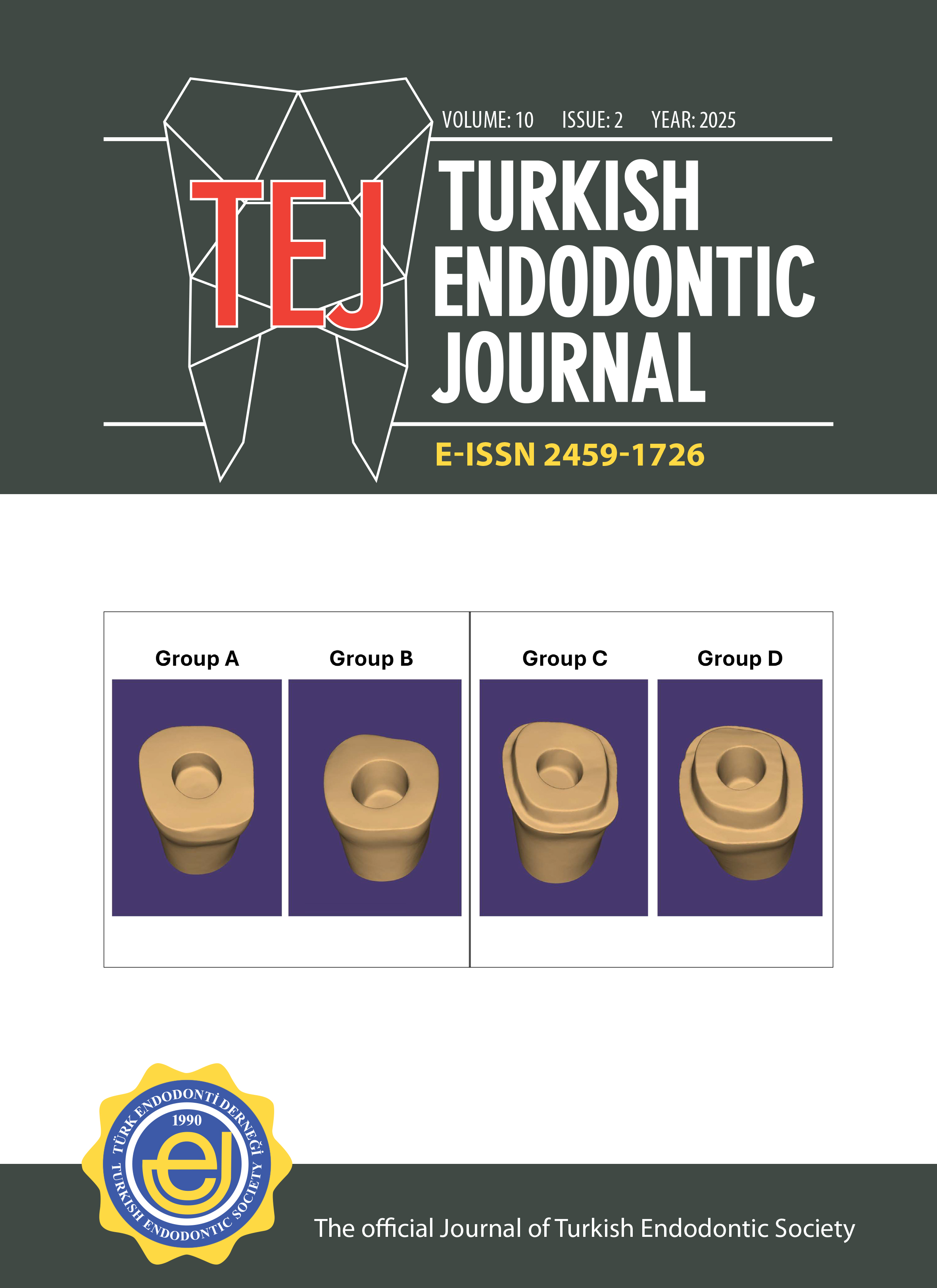In vitro evaluation of the bond strength of an epoxy resin-based and bioceramic root canal sealers after using different final irrigant agitation techniques
Salih Düzgün, Hüseyin Sinan Topçuoğlu, İpek Eraslan Akyüz, İlke Manolya ÖzdemirDepartment of Endodontics, Faculty of Dentistry, Erciyes University, Kayseri, TürkiyePurpose: Evaluating the effect of different final irrigation agitation techniques on the bond strength of AH Plus Bioceramic sealer (AHPBS).
Methods: Ninety single-rooted teeth were included in this study. Endodontic access cavities were prepared. The working length (WL) was established. All root canals were enlarged up to Protaper Universal F3. The teeth were then randomly divided into three main groups of 30 teeth according to the final irrigation agitation methods (n = 30). Group 1: Manual dynamic activation (MDA), Group 2: Ultrasonic irrigant agitation (UIA), Group 3: Sonic agitation (SA). The canals were dried using paper points before being obturated. Each group was randomly divided into three subgroups according to the type of root canal sealer (n = 10): AH Plus Jet (AHPJ), AHPBS, and Sure Seal Root (SSR). Push-out bond strength (PBS) tests were performed for all specimens. After the measurement of PBS, the failure types were evaluated with a stereomicroscope (BX60; Olympus, Tokyo, Japan) at 30× magnification. The failure types were classified as adhesive failure, cohesive failure, and mixed failure.
Results: While AHPJ had the highest mean PBS value, SSR had the lowest mean PBS value (AHPJ > AH-PBS > SSR, P < 0.05). Coronal and middle thirds were statistically significantly lower than the apical third (P < 0.05), while they had similar mean PBS values (P > 0.05). UIA had a statistically significantly higher mean PBS value compared to MDA (P < 0.05). When failure types were evaluated, cohesive failure was the most frequent type of failure in all groups.
Conclusion: All root canal sealers had the highest PBS value at the apical third, and an epoxy resin-based sealer also had a higher PBS value than a bioceramic-based sealer. The PBS value of all sealers may increase with UIA compared to MDA.
Manuscript Language: English



















